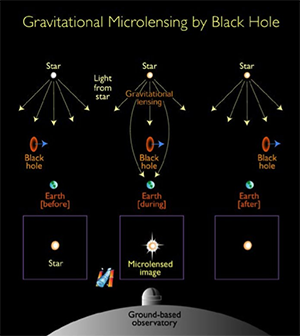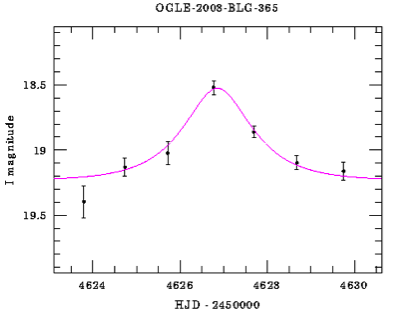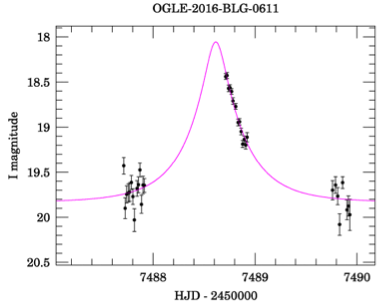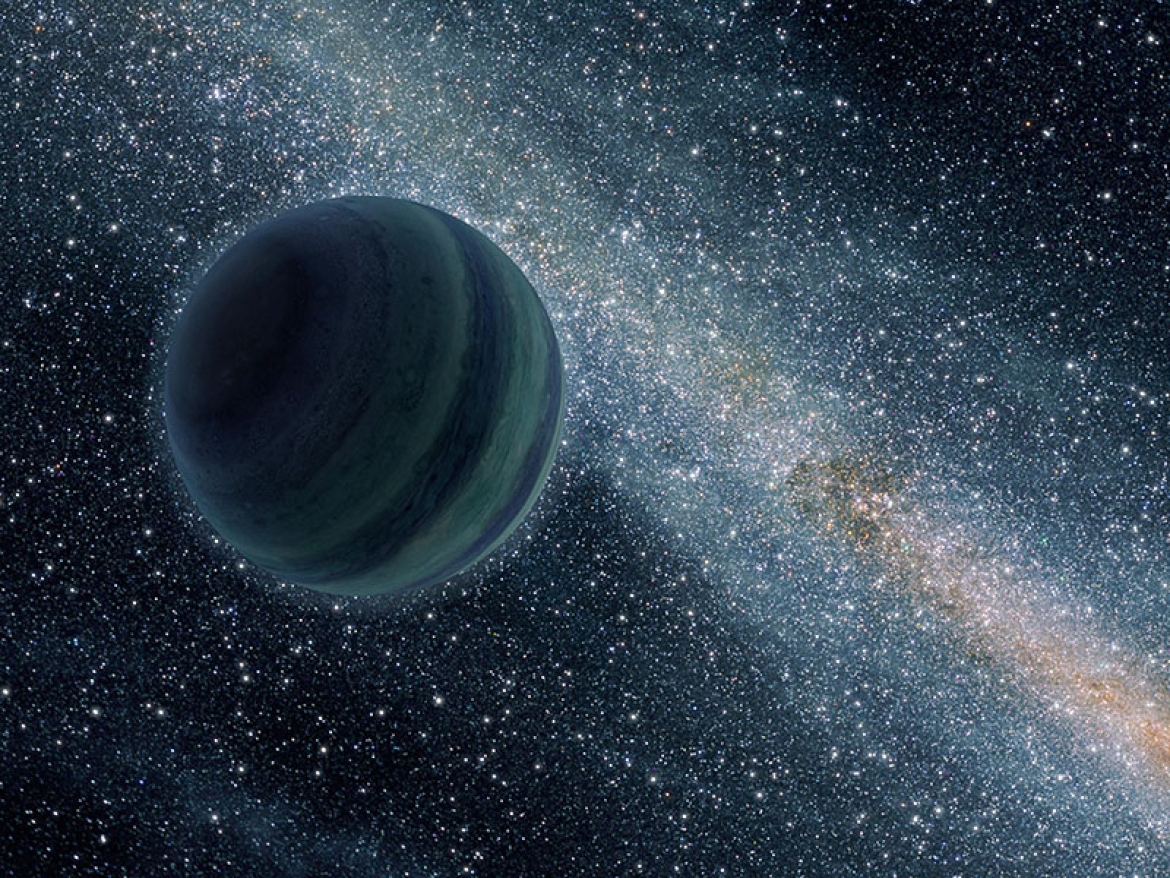Free-floating planets not as common as thought?
More than 3500 extrasolar planets have now been detected; the study of these extrasolar planets and our own solar system is one of the most exciting areas in astrophysics. Virtually all of these planets are found around other stars. For example, our Earth orbits around the Sun. However, theory predicts some planets are either formed or ejected from proto-planetary disks because of dynamical interactions during their formation. These planets are called free-floating or rogue planets.
How do we find these free-floating planets? Popular methods such as radial velocity and transits all rely on the presence of a host star and so do not work at all. Perhaps the only systematic method to search for these exotic planets is through microlensing, which refers to the temporal brightening of a background star due to intervening object(s). A schematic diagram about microlensing is shown in Figure 1.



For a typical star in the Milky Way, the lensing probability is very low, about one in a million. Because of this, Einstein in 1936 concluded that “there is no great chance of observing this phenomenon”. However, he did not foresee the emergence of new CCD detectors (now in everyday use in digital cameras) and fast computers. These technological advances make the search for a needle in a haystack possible! Even so, astronomers tend to monitor dense stellar fields such as the center of the Milky Way to identify microlensing events out of hundreds of millions of stars. If Einstein were alive today, he would be amazed that more than 20,000 microlensing events have been discovered, and microlensing events are announced in real-time on web sites.
Most microlensing events last for about a month and are due to lensing by normal stars, or some very long events probably lensed by stellar-mass black holes. However, a very small fraction last for only about a day or so (see Figure 2 for two examples). Since the event duration is proportional to the square root of the lens mass, and so these short events may be due to Jupiter-mass free-floating planets. In fact, the MOA microlensing survey concluded that perhaps there are two Jupiter-mass free-floating planets for every single star based on their observed number of short events. The question is whether this is consistent with current planet formation theories.
Tsinghua Physics undergraduate, Sizheng Ma and Prof. Shude Mao, together with Wei Zhu (Ohio State), and Profs. Doug Lin (IAS and Santa Cruz) and Shigeru Ida (Tokyo Institute of Technology) studied the predicted number of short microlensing events in the popular core accretion theory of planet formation. They concluded that the predicted number of free-floating planets, in this theory, is probably a factor of 10 lower than the observed events. This study, published in MNRAS Letters, indicates that either free-floating planets are not as common as “observed”, or the current theory of planet formation is inadequate. For example, current theories consider only planet formation around single stars. However, most stars are in binary systems, it is possible planets formed in such systems are more easily removed from their hosts stars and manifest as free-floating planets.
Currently THCA faculty and students are involved in the Kepler 2 Campaign 9 survey of microlensing toward the center of the Milky Way. We are currently leading a study using the 3.6m Canada-France-Hawaii Telescope (on Mauna Kea, Hawaii) to monitor some microlensing events. Combined with observations taken simultaneously from space, these observations may yield more insights into free-floating planets. Stay tuned for more excitement!
More details can be found in Ma et al. 2016, MNRAS, 461, L107
(by Shude Mao)



